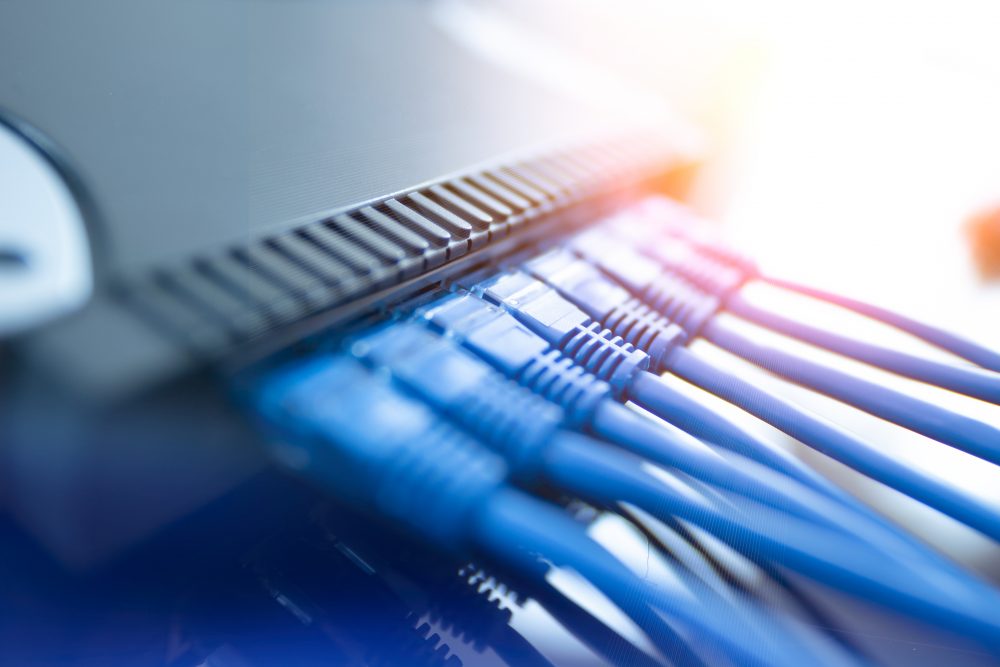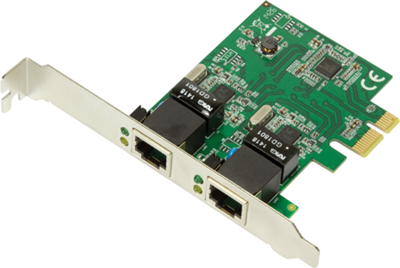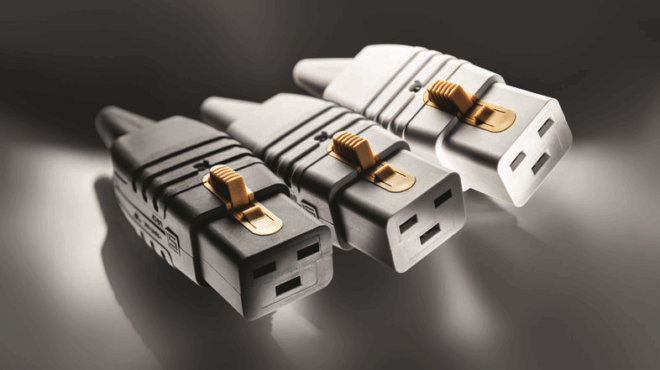
The Basics of Network Technology and Telecommunications
Everyone uses them, even if many people do not know what exactly is hidden behind the term: we are talking about networks that are omnipresent in both private and professional life. But what technology is behind them, and what purpose do networks serve in telecommunications? Bürklin offers not only answers to these questions, but also the necessary components to enable you to create high-performance networks in business, at home or on the road.
Table of contents
- What is a network?
- Transmission technology: data transmission in networks
- For managing and organizing networks
- Advantages of network technology
- LAN, WAN, GAN, and other network types
- Network types in use
- Data transmission in the network
- What are network addresses?
- The key to success: networks for Industry 4.0
What is a network?
A network is created as soon as at least two computer systems are physically and logically connected to each other. It is therefore a combination of computers and other network-capable devices. By networking via a cable or WLAN, the individual device components can communicate with each other. The aim is to share resources such as servers, memory, programs, files, databases or printers.
In the meantime, digital networks have become an integral part of everyday life – ideally, networking functions inconspicuously and without interference But: Expectations of data transmission technology grow with every technological innovation. Rising user numbers place more and more demands on the (used) network. As a result, the demand on the individual system components, such as the connection modules, network connectors and patch cables, is increasing.
Good to know: Intelligent applications such as smart control in the sense of building automation can also be part of a network.
Transmission technology: data transmission in networks
Modern networks are largely based on the principle of packet switching. Small data units (packets) are routed through the network. Because packets are used for communication, many users can use the same data path in the network at the same time.
Network technology: In the vicinity of data networks are (usually) cables, connectors and antennas. According to the company, environment and application area, network technology is at different stages of development. Standards in the field of this technology support the construction and integration of new networks into existing systems: standardized connectors, patch cables (Cat.3, Cat.5 or Cat.6), chassis jacks (for example, RJ45 standard), modular connectors, patch panels or mounting rail distributors allow a manufacturer-independent combination of different equipment units.
Designations of the cabling type consist of the specification of the maximum transmission rate, the transmission technology and segment length (max. number) or the cable type. This means for a 1,000Base-T cabling: the number 1,000 describes the data processing of 1,000 Mbit/s (a Gigabit Ethernet copper cable). The T describes the four pairs of unshielded twisted pair cable (Cat.5 standard). The maximum length of the cable is 100 meters.
For managing and organizing networks
There are various options in the hardware and software area to manage and organize the data, users, and access rights of network devices. In addition, remote access to networks via encrypted connections is becoming increasingly important. An example of this is Smarthome. In the professional context, Internet applications enable the home office work model. Here, employees access the company server from home using stationary computers or mobile devices such as laptops and smartphones.
What it takes for Internet-enabled devices to communicate: a so-called IP address. This is a concrete sequence of numbers that is assigned to a user device. On the one hand, it identifies the sender or the server from which data is sent and, on the other hand, ensures that data is transferred to the correct recipient.
Advantages of network technology
In contrast to unnetworked computers, users of network technology can …
- Access common data stocks.
- Use available resources simultaneously.
- Share computing power and storage capacity.
- Control programs and data centrally.
- Determine authorizations and responsibilities.
- Implement data protection and data security.
Conclusion: Whenever it makes
LAN, WAN, GAN, and other network types
Network technologies differ mainly in terms of their range and geographical extension. This explains why there is also talk of network dimensions based on the following network technologies:
| Abbreviation | Network-Type | Example |
|---|---|---|
| PAN (Personal Area Network) | Personal network | Bluetooth |
| LAN (Local Area Network) | Local network | Ethernet and WLAN, for example within a company |
| MAN (Metropolitan Area Network) | Regional network | Broadband communication networks over up to 100 km |
| WAN (Wide Area Network) | Public network | DSL und DSL and mobile telephony for entire countries or continents |
| GAN (Global Area Network) | Global network | Internet, i.e., the World Wide Web (www) with countless servers and computers worldwide |
Anyone accessing a LAN usually also participates in a WAN or GAN. Therefore, it is not possible to define the network dimensions one hundred percent. The abbreviation WLAN stands for Wireless Local Area Network. Here, communication takes place via radio (wireless) and therefore without the use of cables. Ethernet technology makes it possible to establish this wireless connection and has established itself as the standard for all LAN and WAN networks. H2: Netzwerk-Arten im Einsatz.
Network types in use
Which sytsems do we use for networking …
- a LAN? When it comes to using shared resources such as Internet access, programs, storage capacity or printers.
- a WAN? To use the services of others in terms of data processing and information exchange or to be able to offer our own services to others.
- a GAN? If participation in globally available communication applications such as the Internet, telephony or e-mail is to be enabled.
Excursus: Protocols and layer models in network technology
The so-called network protocols are crucial for the communication flow between the systems involved. These define certain system rules: How is the communication established? How and via which technology do the systems exchange information? How is the communication terminated? In addition to information and data, protocol information is also exchanged and processed at the recipient’s end.
Usually there are several network protocols, each of which regulates subtasks of communication and is assigned to a specific software layer in the layer model. In the different layer models, the number of layers and thus the task density varies. This is because each programmed layer has a specific task and thus solves a communication problem.
Important: In order for the network to function and for several participants to be able to use various applications simultaneously, the sender and receiver must work with the same layer model. The best-known examples are the DoD layer model and the ISO/OSI-7 layer model.
Data transmission in the network
The communication and thus the data transfer in the network is connection-oriented or connectionless:
- connection-oriented: Data exchange requires a logical connection between the communication partners. This connection is maintained during the data transfer and is only terminated when the connection is terminated.
- connectionless: There is no logical and therefore permanent connection. Rather, it is a transfer of small data units, which is treated as a completed process by most protocol layers.
In connectionless transmission, we generally speak of data packets or even just packets. Depending on the technology or the reason for the communication, the following terms are also commonly used to refer to transmission units:
- application: Message or Message
- Transport: Segment
- Mediation: Datagram
- Backup: Frame or Frame
- Bit transmission: bit sequence or bitstream
What are network addresses?
To identify the sender and receiver of a data packet or message within a network, special network addresses are used. These differ in their function, application, and protocol layer, i.e.: For communication, each layer uses its own network addresses:
- Application: URL, domain, mail address etc.
- Transport: Port
- Mediation: IPv4 address, IPv6 address
- Network access: MAC address (IEEE)
Interesting: Internet addresses are network addresses that are used on the Internet. The term URL (Uniform Resource Locator) is often used in this context. However, this is not a direct address, but a standardized way to uniquely call up desired website content.
The key to success: networks for Industry 4.0
In order to implement Industry 4.0 and the Internet of Things (IoT) with its numerous application possibilities (for example, smart factories or automotive), high-performance networks are necessary. This is because the increasing number of apps, peripheral devices and data means that the load on the networks is increasing. That is why companies should pay attention to the continuous further development and expansion of their respective networks.
Development of new network types
Agile, efficient, and high-performance networks are needed to integrate digital technology in line with new standards. They must adapt flexibly to the needs of operations and be secure and reliable.
New technologies will also make it possible to increasingly network a wide variety of objects and automate or regulate different processes. What is needed are performance-efficient networks that minimize performance fluctuations and system failures.
One example is an SD-WAN architecture: companies use or combine different transmission technologies (for example, MPLS, LTE and broadband Internet services) for the secure and effective sharing of data.
Network Technology Components from Bürklin Elektronik
Whether commercial, home network or the integration of smart home components: If you are looking for components to build a network, you will find many of them in Bürklin’s online store. From A like connection line to Z like accessories an extensive assortment is offered for private users as well as for commercial customers with complex requirements. For computer systems that meet your individual needs.





